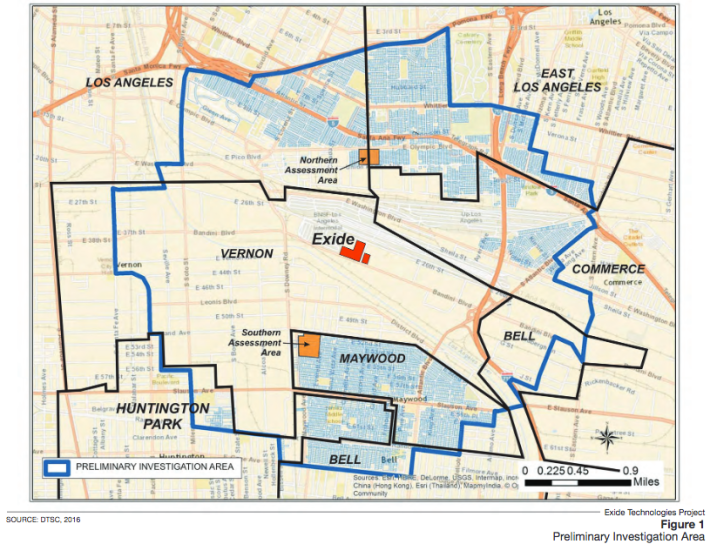
This coming Saturday, June 25, and next Thursday, June 30, the Department of Toxic Substances Control (DTSC) will hold scoping meetings to gather community input regarding the extent to which the clean-up of lead-contaminated properties located within a 1.7-mile radius of shuttered lead-acid battery smelter Exide could affect surrounding neighborhoods. Community comments, the DTSC Notice of Preparation (NOP) states, will "help shape the scope of the Environmental Impact Report" (EIR) which will ultimately guide the clean-up of as many as 2,500 contaminated properties.
Earlier this year, Governor Jerry Brown had contemplated exempting the residential clean-up from a review as he prepared to ask the legislature for the $176.6 million needed to test 10,000 properties and clean up as many as 2,500.
Proceeding without an EIR for the residential clean-ups would have expedited the process of remediating the highest priority properties - already expected to take at least a full year. Doing so, however, many community members ultimately decided, might have worked against their own interests.
Speaking on the issue back in March, Executive Director of East Yard Communities for Environmental Justice Mark Lopez said, "The reason we are in this whole mess is because the state didn’t fully understand the impact of Exide on our communities."
Assessing potential impacts on the community ahead of time would hopefully preclude any further damage and ensure what promises to be a massive clean-up is carried out in the most sensitive way possible.
The input DTSC is looking for from the community is specific to the kinds of activity residents can expect to see on their streets, including traffic congestion, air quality issues, water quality issues, noise issues, and issues related to the movement of hazardous materials. In particular, DTSC intends to explore the feasibility of clustering clean-ups, meaning a street that has several contaminated properties would see multiple crews doing soil excavation, removal, and replacement at multiple homes at the same time. DTSC estimates they will be able to remediate approximately 50 properties per week.
DTSC has brought on Pasadena-based ESA PCR to draft the EIR, and seeks to have the EIR completed and certified by the summer of 2017. Testing of properties within the 1.7-mile radius of the plant will continue while the EIR is being conducted. Residential clean-ups would begin immediately after certification.
This Saturday's scoping meeting will be held at Perez Park (6208 Alameda St. in Huntington Park) from 10 a.m. to noon. Next Thursday's meeting will be held at Commerce Council Chambers (2535 Commerce Way in Commerce) from 6:30-8:30 p.m. The public comment period runs between June 16 through July 18 of this year. Comments can also be submitted via email: ExidePIACleanup[at]dtsc.ca.gov. For more information, see the NOP here, or visit DTSC's website.






